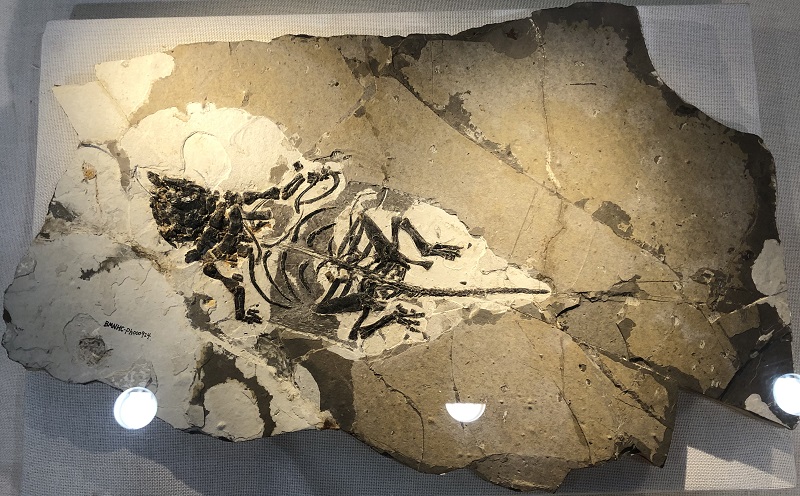BH Staff | June 1, 2023
Age and Locality: Early Cretaceous, Liaoning Province.

Liaoningosaurus paradoxus is a highly intriguing and somewhat controversial dinosaur species that was discovered in the famous Yixian Formation of Liaoning Province, China. This formation is renowned for its exceptionally well-preserved fossils from the Early Cretaceous period, approximately 123 million years ago. The name “Liaoningosaurus” means “Liaoning lizard,” and “paradoxus” reflects the initial puzzlement and surprise surrounding its discovery and unique characteristics.
Liaoningosaurus paradoxus is classified within the Ankylosauridae family, a group known for their heavily armored bodies and tail clubs. However, Liaoningosaurus presents a set of features that are quite distinct from typical ankylosaurs, leading to its classification as a highly specialized or possibly a very young individual within this group.
One of the most remarkable aspects of Liaoningosaurus is its size and presumed lifestyle. Early studies suggested that it was relatively small for an ankylosaur, with estimates of its length ranging from 1 to 1.5 meters. This small size led to speculations about its ecological niche, including the possibility that it might have been semi-aquatic, a hypothesis supported by features like webbed feet and flattened tail, which could have been used for swimming. This would be highly unusual for ankylosaurs, which are generally considered to have been terrestrial animals.
Moreover, the discovery of fish scales within the stomach region of one Liaoningosaurus specimen suggested a diet that included fish, further supporting the aquatic lifestyle hypothesis. However, these interpretations have been met with skepticism and debate among paleontologists, with some suggesting alternative explanations for the observed features.
Despite the debates, Liaoningosaurus paradoxus remains a fascinating example of dinosaur diversity and adaptability. Its discovery in the Yixian Formation, a site known for its exceptional fossil preservation, including feathers in theropods and early birds, adds to our understanding of the complex ecosystems that existed during the Early Cretaceous period.
Research on Liaoningosaurus and other dinosaurs from the Yixian Formation continues to shed light on the evolutionary history of dinosaurs and their ecosystems. As more specimens are discovered and studied, our understanding of Liaoningosaurus paradoxus, including its lifestyle, ecology, and place within the dinosaur family tree, is likely to evolve further.
